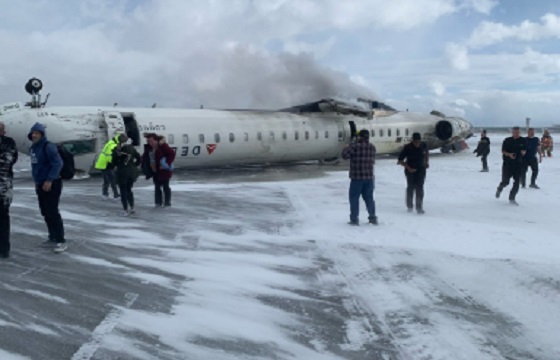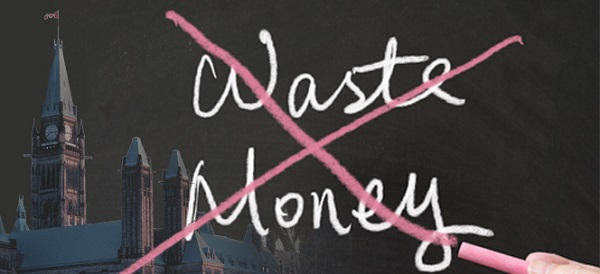Alberta
Province announces $11 million investment to train Albertans to work in aviation industry
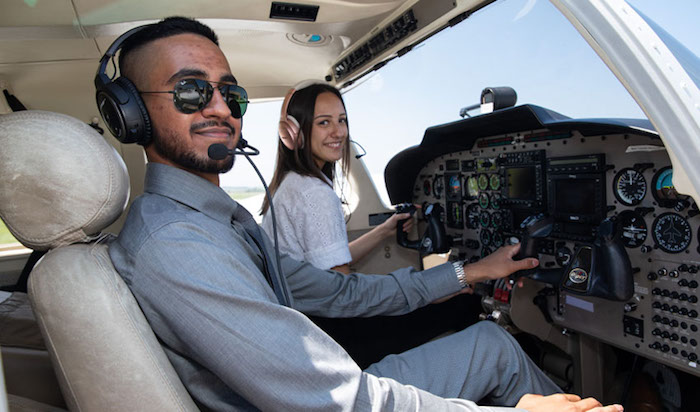
Helping Alberta become Canada’s next aviation hub
The Ministry of Advanced Education is supporting Alberta’s growing aviation industry by investing more than $11 million over three years in Budget 2023.
Alberta continues to be the economic engine of Canada, and Alberta’s government is focused on even more job creation and diversification. Last fall, Alberta’s government signed a memorandum of understanding with WestJet Airlines, recognizing the importance of Alberta’s aviation industry and its contributions to the economy.
Part of the framework of the MOU included a commitment to address critical skilled labour shortages currently faced by the aviation industry. Alberta is home to the second-largest Canadian airline, which operates almost 800 flights carrying 70,000 passengers daily. These numbers are expected to double over the coming years.
That’s why Alberta’s government is committed to growing and diversifying its aerospace, aviation and logistics sectors. This new investment of $11 million includes:
- $6 million over three years to help Mount Royal University establish a bachelor of aviation management program
- $4.5 million over three years for an air access bursary for students in high-demand aviation programs
- $500,000 to support planning of an aviation centre of excellence
“These investments will help ensure Alberta’s air industry has the resources and workforce it needs to succeed, further supporting the growth and vitality of Alberta’s aviation industry, the diversifying of our economy and leading more students to successful careers.”
Supporting new seats in aviation education
Mount Royal University’s bachelor of aviation management program will add 120 seats over four years and be the first of its kind in Alberta. Unlike the aviation diploma, students seeking admission do not have to have a private pilot’s licence.
“We thank the Government of Alberta for this support of Mount Royal’s aviation program and the future pilots it educates. With the demand for pilots continuing to grow, this announcement speaks to the strength of the program, the vital role of education in advancing the aviation sector and its importance to the economy of Alberta.”
Tim Rahilly, president and vice-chancellor, Mount Royal University
The proposed program is a standard 120-credit degree. While there is only a generalized major, aviation management, the institution is offering the program with two different six-course concentrations.
One concentration in flight crew operations offers a commercial pilot and multi-engine instrument rating course to prepare students for a role as a pilot as well as other courses designed to prepare them for management opportunities as their flying career develops. The other concentration in aviation operations focuses on a greater development of management skills and specific aviation business content.
New bursary for aviation students
The new air access bursary provides $10,000 in non-repayable support for aviation students at Alberta post-secondary institutions. A total of $4.5 million will support up to 450 students over three years.
“Aviation is a growing field and the demand for pilots continues to soar. We thank the Government of Alberta for their financial support for students like me in the aviation program at Mount Royal University.”
Creating a hub for excellence
Alberta’s government is working across multiple ministries to support its air access expansion strategy as part of the memorandum of understanding with WestJet Airlines. Through this strategy, Alberta’s government is looking to boost the provincial economy by more than 1,000 direct jobs in Alberta and tens of thousands of other new jobs and billions in new economic activity. Pending approval, $500,000 will support planning for the centre of excellence for aviation training.
“The memorandum of understanding between the Government of Alberta and WestJet sets a foundation to support aviation-related post-secondary programs and improve skilled labour in the industry. This announcement strengthens these commitments and WestJet applauds the Government of Alberta for this funding that will further support WestJet’s Center of Excellence for advanced aviation training right here in Alberta.”
Alberta is proving to be Canada’s next aviation hub and Alberta’s government continues to build and create new partnerships with the aviation industry and Alberta’s post-secondary institutions. Another key partnership in the province’s aviation industry exists between De Havilland and SAIT, focusing on aircraft manufacturing.
“This investment in critical skills and training comes at a time when our company is actively growing our Alberta footprint to advance our mission of manufacturing great Canadian aircraft that serve communities, transport passengers and save lives around the world. We look forward to continuing to work with the Government of Alberta to ensure we have the trained staff we need to deliver a new aerospace sector in the province.”
Budget 2023 secures Alberta’s future by transforming the health-care system to meet people’s needs, supporting Albertans with the high cost of living, keeping our communities safe and driving the economy with more jobs, quality education and continued diversification.
Quick facts
- Alberta’s aviation, aerospace and logistics industries employ more than 75,000 people (2021, Statistics Canada).
- This investment expands on the October 2022 announcement that invested more than $8 million over three years to expand several key facilities and added 40 seats per year to Mount Royal University’s aviation diploma program.
- A 2018 report from the Canadian Council for Aviation and Aerospace found that Canada’s aviation industry will need as many as 7,300 more pilots by 2025.
Alberta
New children’s book demonstrates how the everyday world is connected to natural resources
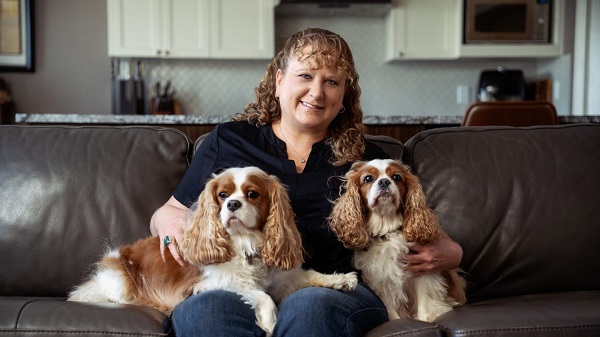
From the Canadian Energy Centre
‘Today’s youth have the opportunity to lead us into the future with innovative solutions for environmental challenges’
After a 24-year career in oil sands land reclamation, author Tanya Richens is sharing her knowledge with young minds.
Her new book, From the Earth to Us: Discovering the Origins of Everyday Things, explores the relationship between natural resources and the things we use in everyday life, from computers and water bottles to batteries and solar panels.
“There is a gap in society’s understanding of where things come from. We are a society driven by consumerism and immediate gratification. We order something online, and it arrives on our doorstep the next day. We don’t stop to think about where it really came from or how it was made,” Richens says.
“There’s an ever-increasing societal position that mining is bad, and oil is even worse… But there’s a simple hypocrisy in those beliefs, since so many things in our lives are made from the raw materials that come from mining and oil and natural gas,” she says.
The book, illustrated by reclamation artist Shannon Carla King, follows young Hennessy Rose and her Cavalier King Charles Spaniel Riley on a trip to a children’s summer camp.
Hennessy’s mom is a guest speaker on the origin of everyday items and the relationship between humans and the earth. Through detailed explanations of items surrounding her, Hennessy’s mom teaches the kids how rocks, minerals, oil and gas from the earth are used to power and aid our lives, creating items such as building supplies, food and hair products, camping and sports equipment, and cell phones.
 Author Tanya Richens poses with her two books for children about natural resources. Photo for Canadian Energy Centre
Author Tanya Richens poses with her two books for children about natural resources. Photo for Canadian Energy Centre
“I thought a simple and fun book explaining the raw materials needed to make everyday items would be valuable for all ages,” Richens says.
“When people feel personally connected to natural resources, they are more likely to promote sustainable practices. Today’s youth will have the opportunity to lead us into the future with innovative solutions for environmental challenges.”
Richens‘ career began with Alberta Environment, where she was a coordinator of reclamation approvals in the oil sands. She oversaw technical reviews of oil sands reclamation applications, communicated with statement of concern filers, coordinated public hearings and provided support for legislative changes.
She moved from government to Suncor Energy, ensuring the company’s compliance on reclamation projects and led initiatives to obtain reclamation certificates. She now works as an independent consultant.
Drawing on her wealth of experience in the field, Richens’ first book, Adventures in Land Reclamation: Exploring Jobs for a Greener Future, seeks to excite kids aged 9-12 years about jobs related to the environment and land reclamation.
Hoping to get From the Earth to Us into the hands of teachers, Richens is heading to the Edmonton Teachers Convention in late February. She says the book supports multiple learning outcomes in Alberta’s new science curriculum for grades 3, 4, 5 and 6.
“Ultimately, I’d like people to understand and acknowledge their individual part in the need for mining and oil and natural gas development. Until the naivety and hypocrisy in the world is addressed, I’m not sure that real environmental change is possible.”
Richens’ books can be purchased on her website at tcrenvironmental.com.
Alberta
Open letter to Ottawa from Alberta strongly urging National Economic Corridor
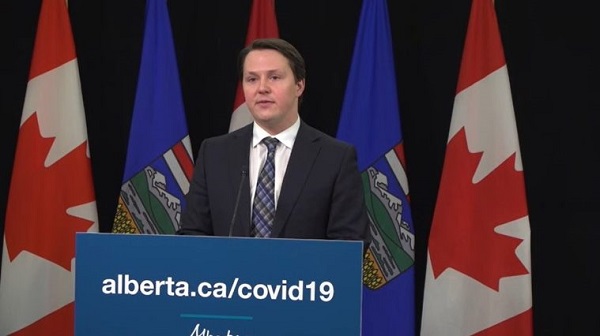
Canada’s wealth is based on its success as a trading nation. Canada is blessed with immense resources spread across a vast country. It has succeeded as a small, open economy with an enviable standard of living that has been able to provide what the world needs.
Canada has been stuck in a situation where it cannot complete nation‑building projects like the Canadian Pacific Railway that was completed in 1885, or the Trans Canada Highway that was completed in the 1960s. With the uncertainty of U.S. tariffs looming over our country and province, Canada needs to take bold action to revitalize the productivity and competitiveness of its economy – going east to west and not always relying on north-south trade. There’s no better time than right now to politically de-risk these projects.
A lack of leadership from the federal government has led to the following:
- Inadequate federal funding for trade infrastructure.
- A lack of investment is stifling the infrastructure capacity we need to diversify our exports. This is despite federally commissioned reports like the 2022 report by the National Supply Chain Task Force indicating the investment need will be trillions over the next 50 years.
- Federal red tape, like the Impact Assessment Act.
- Burdensome regulation has added major costs and significant delays to projects, like the Roberts Bank Terminal 2 project, a proposed container facility at Vancouver, which spent more than a decade under federal review.
- Opaque funding programs, like the National Trade Corridors Fund (NTCF).
- Which offers a pattern of unclear criteria for decisions and lack of response. This program has not funded any provincial highway projects in Alberta, despite the many applications put forward by the Government of Alberta. In fact, we’ve gone nearly 3 years without decisions on some project applications.
- Ineffective policies that limit economic activity.
- Measures that pit environmental and economic objectives in stark opposition to one another instead of seeking innovative win-win solutions hinder Canada’s overall productivity and investment climate. One example is the moratorium on shipping crude through northern B.C. waters, which effectively ended Enbridge’s Northern Gateway proposal and has limited Alberta’s ability to ship its oil to Asian markets.
In a federal leadership vacuum, Alberta has worked to advance economic corridors across Canada. In April 2023, Alberta, Saskatchewan and Manitoba signed an agreement to collaborate on joint infrastructure networks meant to boost trade and economic growth across the Prairies. Alberta also signed a similar economic corridor agreement with the Northwest Territories in July 2024. Additionally, Alberta would like to see an agreement among all 7 western provinces and territories, and eventually the entire country, to collaborate on economic corridors.
Through our collaboration with neighbouring jurisdictions, we will spur the development of economic corridors by reducing regulatory delays and attracting investment. We recognize the importance of working with Indigenous communities on the development of major infrastructure projects, which will be key to our success in these endeavours.
However, provinces and territories cannot do this alone. The federal government must play its part to advance our country’s economic corridors that we need from coast to coast to coast to support our economic future. It is time for immediate action.
Alberta recommends the federal government take the following steps to strengthen Canada’s economic corridors and supply chains by:
- Creating an Economic Corridor Agency to identify and maintain economic corridors across provincial boundaries, with meaningful consultation with both Indigenous groups and industry.
- Increasing federal funding for trade-enabling infrastructure, such as roads, rail, ports, in-land ports, airports and more.
- Streamlining regulations regarding trade-related infrastructure and interprovincial trade, especially within economic corridors. This would include repealing or amending the Impact Assessment Act and other legislation to remove the uncertainty and ensure regulatory provisions are proportionate to the specific risk of the project.
- Adjusting the policy levers that that support productivity and competitiveness. This would include revisiting how the federal government supports airports, especially in the less-populated regions of Canada.
To move forward expeditiously on the items above, I propose the establishment of a federal/provincial/territorial working group. This working group would be tasked with creating a common position on addressing the economic threats facing Canada, and the need for mitigating trade and trade-enabling infrastructure. The group should identify appropriate governance to ensure these items are presented in a timely fashion by relative priority and urgency.
Alberta will continue to be proactive and tackle trade issues within its own jurisdiction. From collaborative memorandums of understanding with the Prairies and the North, to reducing interprovincial trade barriers, to fostering innovative partnerships with Indigenous groups, Alberta is working within its jurisdiction, much like its provincial and territorial colleagues.
We ask the federal government to join us in a new approach to infrastructure development that ensures Canada is productive and competitive for generations to come and generates the wealth that ensures our quality of life is second to none.
-
Devin Dreeshen
Devin Dreeshen was sworn in as Minister of Transportation and Economic Corridors on October 24, 2022.
-
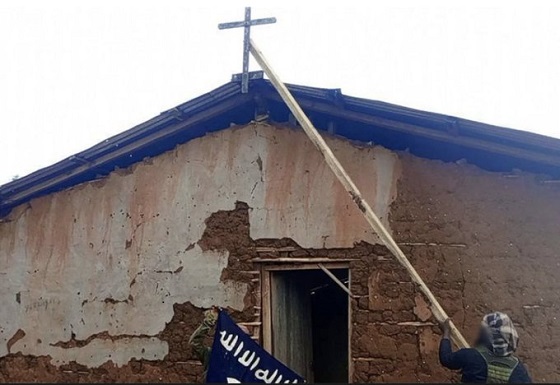
 International2 days ago
International2 days agoJihadis behead 70 Christians in DR Congo church
-

 Daily Caller1 day ago
Daily Caller1 day agoKash Patel First Statement As FBI Director, Tells Media ‘Bring It On’
-
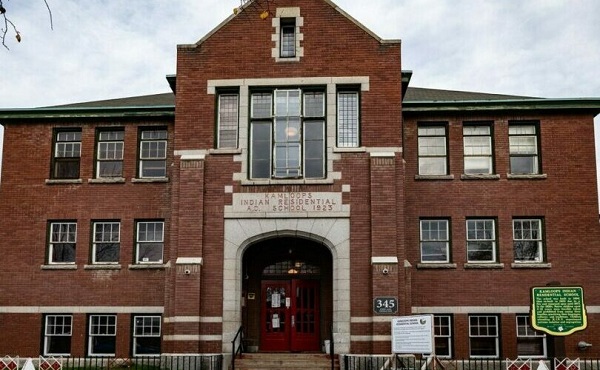
 Indigenous2 days ago
Indigenous2 days agoTrudeau gov’t to halt funds for ‘unmarked graves’ search after millions spent, no bodies found
-

 Business1 day ago
Business1 day agoPepsiCo joins growing list of companies tweaking DEI policies
-
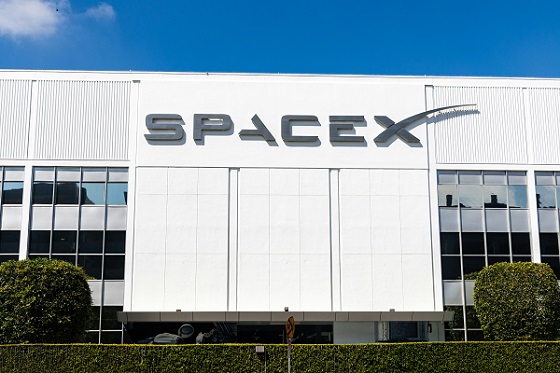
 Business1 day ago
Business1 day agoDOJ drops Biden-era discrimination lawsuit against Elon Musk’s SpaceX
-
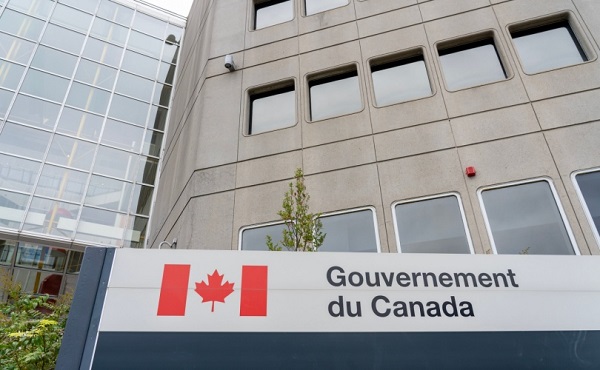
 Business1 day ago
Business1 day agoWorst kept secret—red tape strangling Canada’s economy
-
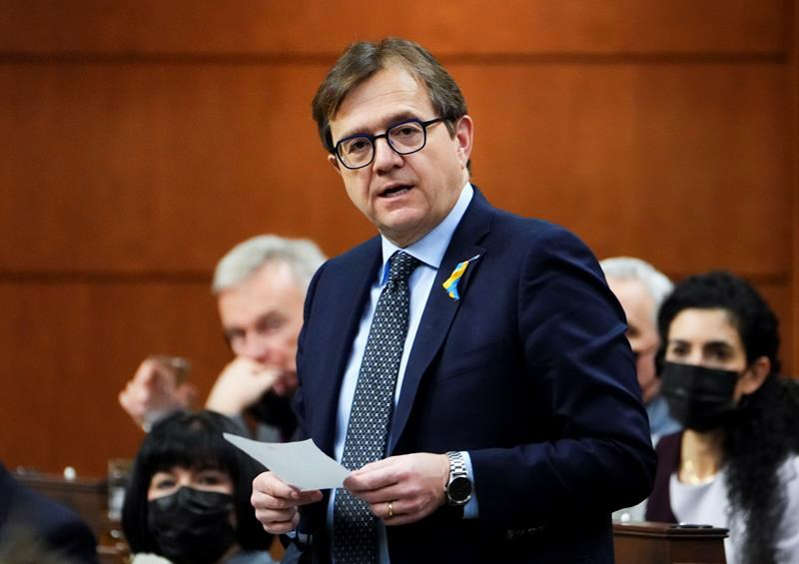
 Energy1 day ago
Energy1 day agoFederal Government Suddenly Reverses on Critical Minerals – Over Three Years Too Late – MP Greg McLean
-

 armed forces1 day ago
armed forces1 day agoTrump fires chairman of Joint Chiefs of Staff, appoints new military leader





